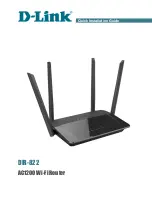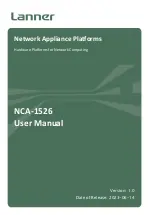
pulsAR
radio Operator's Manual
At the sites where there is a single radio and gateway you should set the gateway tdd sync-mode to
off
. Since there are no co-located radios this setting turns off the generation of heartbeat packets
which are unnecessary.
2.5 Ethernet Bridging
2.5.1
Self-learning bridging
The radio operates the Ethernet port in a self-learning bridge mode. It configures the port in
promiscuous mode, i.e., it examines all the Ethernet packets that are flowing in the local LAN. Since
these Ethernet packets contain a
source
and
destination
address, the radio quickly learns the
addresses of all the
local
stations connected to the LAN (all the source addresses of packets flowing
in the LAN are local).
As a radio receives packets over RF it also learns the addresses of stations that can be reached across
that RF link. For a hub radio in a PmP topology, the radio keeps track of which addresses are
associated with each remote.
With this information on hand, each radio
examines the destination address of every Ethernet packet
in the local LAN and makes one of the following decisions:
1. If the destination address is for a local station, discard the packet.
2. If the destination address is associated with a remote radio, queue that packet to be forwarded to
that remote radio. Note that for a PmP topology, the hub radio keeps multiple output queues, one
per remote radio.
3. If the station address is unknown or is a broadcast send the packet to all the remote radios.
Each device has capacity to store 500 entries in its Ethernet table. Entries are erased after a certain
amount of time to allow for stations to be moved between LANs and not show up in two distinct
LANs. You can control this time-out with the “ethernet” command. If the table ever gets full, entries
that have been least used are erased to make room for new entries.
You can examine the table of ethernet addresses and their respective nodes with the command:
>show ethernet
2.5.2
Packet priorities
As packets arrive into a radio from any port, the bridging algorithm determines if the packets need to
be transmitted over RF. If so the radio queues the packets into one of several priority queues.
Starting with the highest priority the packets are classified as follows:
Vital packets: These are UDP packets with a specific destination UDP port number. This port
number is part of the field programmable radio configuration (see command
>udp
).
NetCrossing Gateways Serial packets: These are SNAP encapsulated packets containing
synchronous serial data generated by the Afar NetCrossing Gateway devices.
High-Priority: These includes network management packets for the Econsole command sessions,
and also IP packets with a value in the “Type-Of-Service” indicating high priority. The radio
interprets the IP TOS field per the IETF
differentiated services (DS)
definition as shown below:
2-14
Summary of Contents for AR-24010E
Page 2: ......
Page 74: ...pulsAR radio Operator s Manual 4 26 ...
Page 96: ...pulsAR radio Operator s Manual B 2 ...
















































